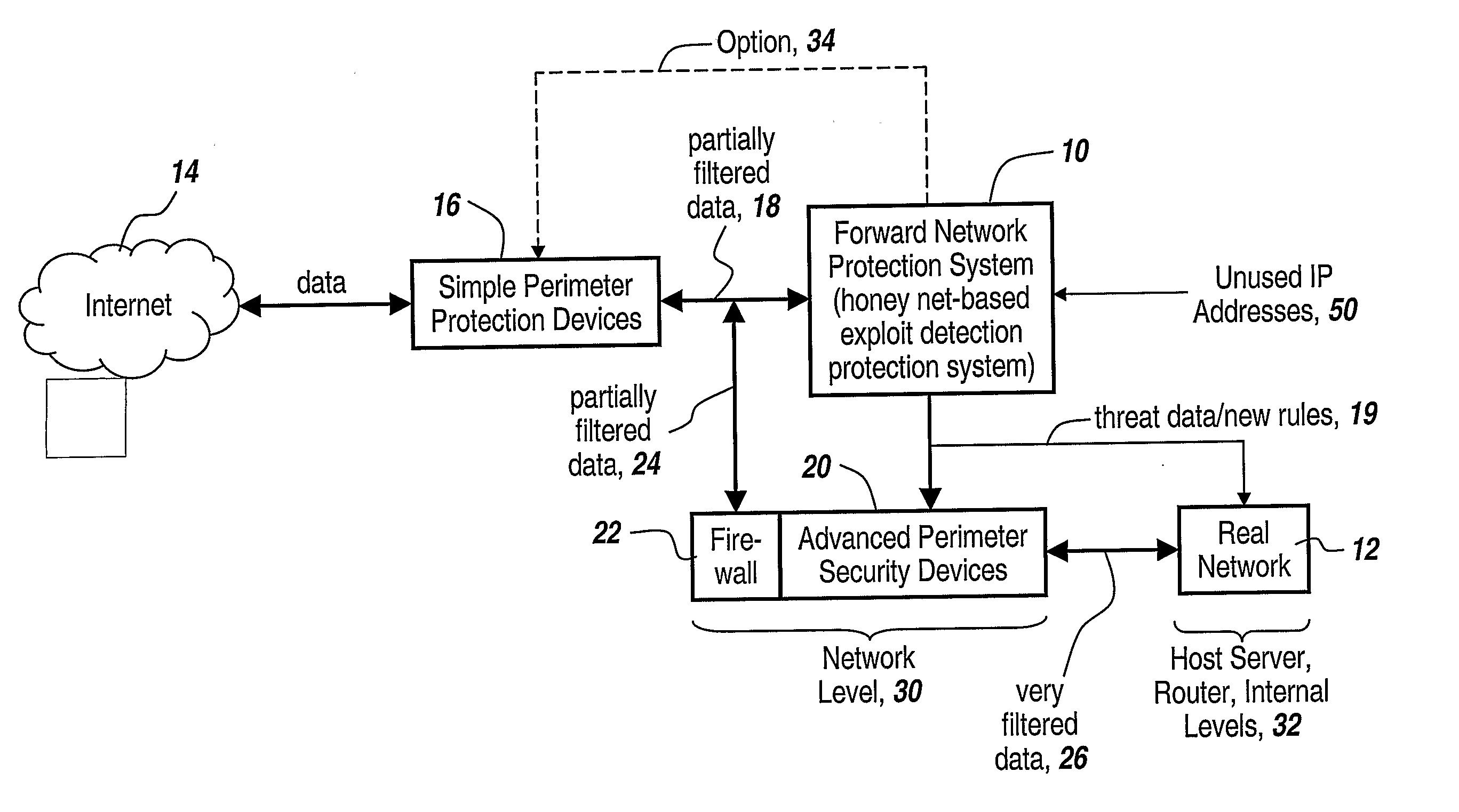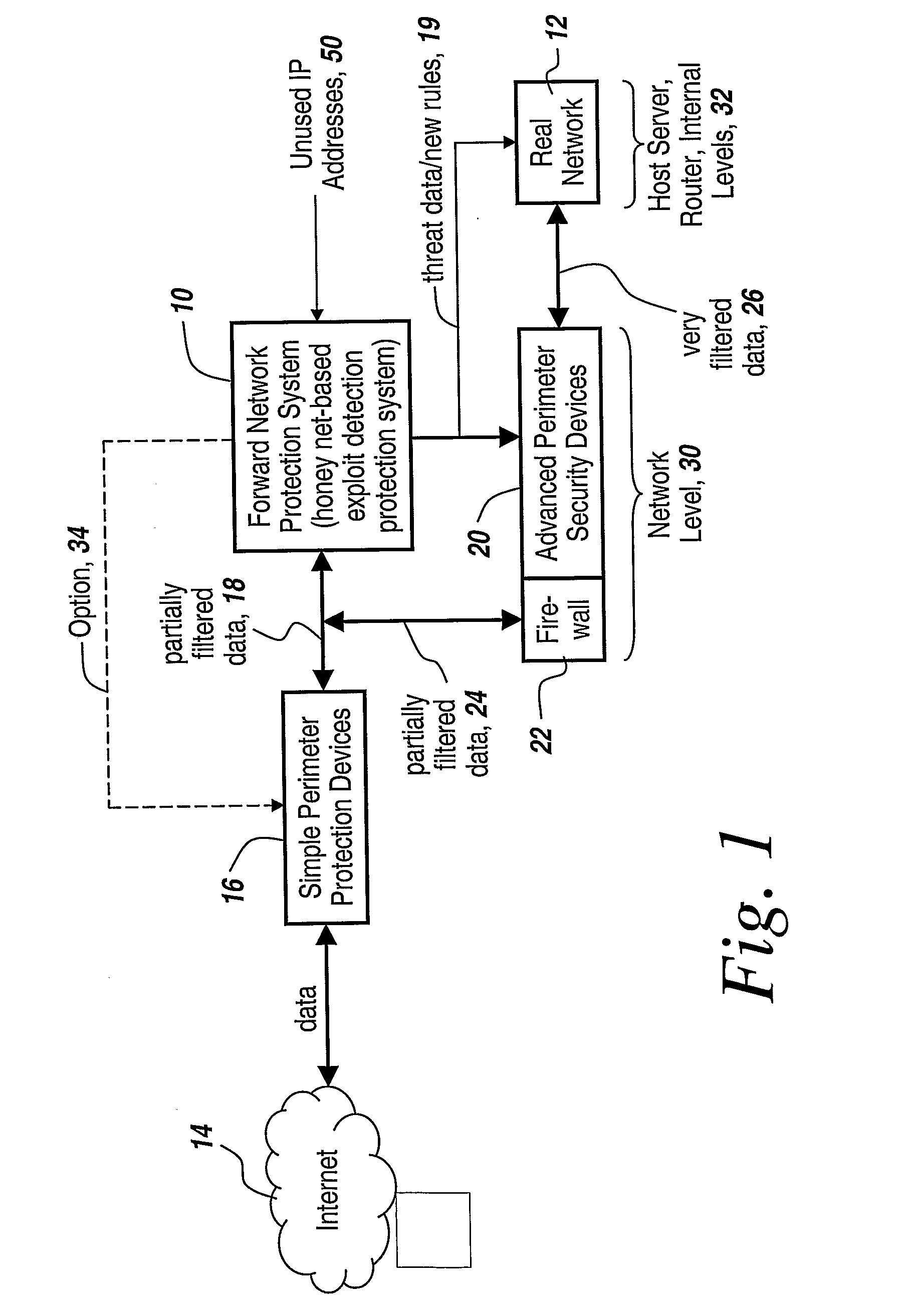One of the most serious and potentially catastrophic types of computer attacks are the so-called zero-day worm-based attacks or exploits against an enterprise network.
The result of a zero-day worm attack would be catastrophic.
While the manufacturers of the operating systems constantly check for vulnerabilities and provide corrective
software patches, oftentimes system administrators do not or cannot keep up with all of the patches.
The problem is that there is not necessarily a good correlation between general anomalies and anomalies seen in a live network due to the non-deterministic nature of user behavior, live
network activity, etc.
The result is that anomaly-based systems typically have unacceptably high
false alarm rates because they are looking through large volumes of data to ascertain what is valid or invalid traffic.
The single most important problem with intrusion detection systems is the high
false alarm rate for anomaly-based approaches.
Moreover, signature-based approaches are obviously only as good as their signature
library.
If either of these approaches has not seen what is spreading, they literally have no way to defend against it.
Thus, if a worm has not been seen, then matching techniques can be to no avail.
As explained above, zero-day (also known as O-day) means that a
vulnerability is known about but has not been patched and can cause significant damage because defensive systems are not anticipating the particular zero-day exploit.
Thus, for instance, if there is a
vulnerability in Windows that some
hacker has discovered, Microsoft may or may not be aware of the situation.
Moreover, the average person on the street, even an expert, may not be aware of the exploit.
For zero day-based worms, at the time they are deployed they attack an unknown vulnerability.
Thus the problem with a zero day-based worm is that no one will be patched against the worm on the
system level.
In the case of a zero-day worm, the vulnerability will be pervasive against
the Internet.
Everyone's fear is that there will be a catastrophic day where someone creates a robust, capable, fast-spreading worm that takes
advantage of zero-day pervasive exploits and attacks some core
operating system, after which the worm spreads over the entire network in a short period of time, assuming it bypasses firewalls.
However, all this does is
delay the infection so that people will have time to respond.
The problem with the threshold is where one is going to set the threshold, the exceeding of which chokes off everything such that the
throughput is at a
snail's pace to create a fair amount of time to react.
However, if one throttles down the network too much, the system is useless as the network will be rendered unusable.
The problem with host-based, anomaly-based systems is that the
machine is monitoring itself and as soon as the system is infected with a
virus; one has another process that is trying to protect against the
virus that has already infected the
machine.
The problem is that by the time one has detected the anomaly, this process has infected the
machine and therefore it is virtually impossible to guarantee that the infected process won't subvert the detection methodology.
As a result, if this
virus or worm gets into a machine, it could subvert both the detection methodology that the intrusion prevention software on the machine is trying to look for.
Even if the anomalies are detected, the worm could nonetheless compromise the software by killing the host process or altering its files.
However, this system has a number of drawbacks, the first of which is that it is very expensive.
Second, the card would have to go on every machine one wants to protect.
Third, it is only looking for root kits, that is, software that is subverting the kernel to hide itself.
Thus, if one seeks to infect a machine and does not try to hide the existence of the worm, this defensive mechanism is useless because it only looks for software that is trying to hide its existence on the machine.
However, this is even further fraught with the problems with anomaly-based systems and ultra-high
false alarm rates.
Thus, the Macaulay system is only looking for invalid computers that are trying to access a
wireless network by sending out probes to join the network.
However, any system that involves human intervention would be much too slow to prevent a zero-day worm attack.
However, the system described in this publication makes no claims for detecting or preventing zero day-based or any other types of attacks.
With these honey pot systems, a
human being must go in and look at the data to ascertain what the attacker is doing, but the honey pot software in and of itself does not make any decisions or take any action.
However, this type of system requires a person in the loop to go and investigate some possible bad activity.
These systems are at most effective against real-world, physical human attackers and are not effective against network-based worms that are autonomously going out to compromise systems in a matter of seconds.
US 2002 / 0162017, this approach does not claim to detect anything or prevent anything.
However, since it uses a honey pot only when one has detected something is amiss, it does not work for protecting enterprise networks against new attacks such as zero-day based worms.
The
disadvantage to intrusion detection systems and intrusion prevention systems is that they do not have a known baseline of valid activity on which to draw conclusions.
Note that this system does not refer to honey pots at all and does not take
advantage of detecting or stopping zero-day attacks.
 Login to View More
Login to View More  Login to View More
Login to View More 


